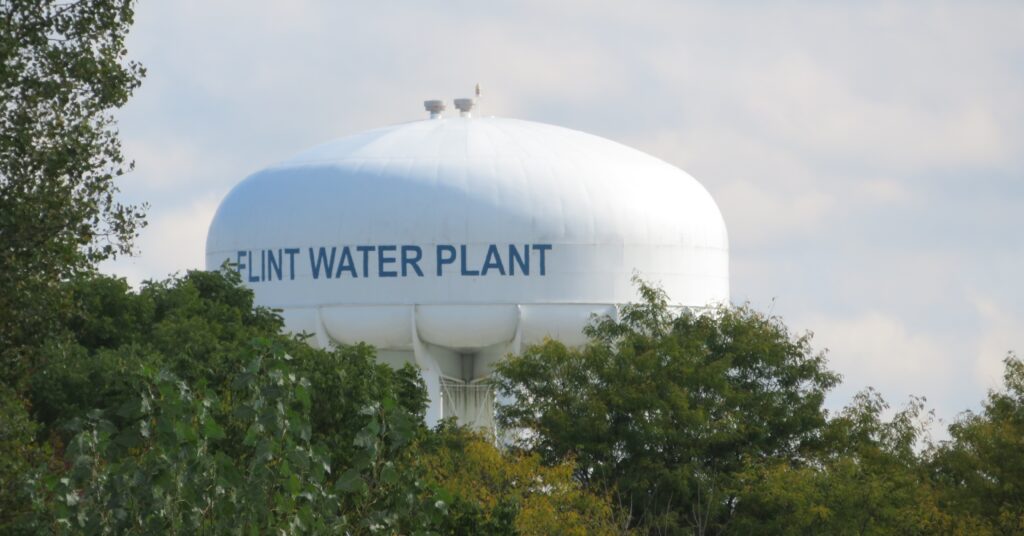- All Posts
- Empowering Communities: The Key to Successful Infrastructure Projects
Empowering Communities: The Key to Successful Infrastructure Projects
Authored by Jason Twill, LEED Fellow
In communities across the United States, the infrastructure crisis is not just a technical challenge—it’s a call to action for the power of community support and engagement. As municipalities and facility owners grapple with aging infrastructure, extreme weather events, and increasing demands, the role of community engagement has never been more crucial. Engaging local communities in infrastructure projects not only fosters a sense of ownership and trust but also ensures that the solutions implemented truly meet the health, safety and resilience needs of those they serve.
Infrastructure projects, whether aimed at improving roads, bridges, water systems, or public buildings, impact the daily lives of community members. For example, a citywide initiative to modernize water treatment facilities in Flint, Michigan, highlighted the importance of community involvement. Residents’ input on their water quality concerns and expectations played a critical role in shaping the project’s priorities and execution. This collaborative approach not only helped address immediate water safety issues but also rebuilt trust between the residents and local government.

Effective community support and outreach can significantly influence the success and sustainability of infrastructure projects. When residents are informed, involved, and invested in the planning and development processes, projects are more likely to be embraced, maintained, and improve social resilience within the community. This involvement can range from public forums and surveys to participatory planning workshops and ongoing feedback mechanisms. Community input helps identify local priorities, roles and responsibilities, cultural considerations, and potential obstacles that might not be apparent to planners and engineers.
Community support and outreach can turn potential opposition into enthusiastic backing, fostering a sense of shared purpose, collaboration and community stewardship. When community members are part of the decision-making process, they are more likely to advocate for and protect the resulting infrastructure improvements. Additionally, this engagement can reveal innovative local solutions and untapped resources, leading to more resilient and adaptable projects. For example, in the redevelopment of public parks in Detroit, active community involvement not only ensured the spaces met residents’ needs but also generated volunteer support for ongoing maintenance, enhancing the long-term viability of the projects.

At Viridis Initiative, we empower communities to take the lead in planning and strategy, recognizing their transformative role in infrastructure development. Our approach integrates comprehensive community outreach strategies to ensure that every project we undertake is aligned with the needs and aspirations of the local population. By fostering open communication and collaboration between project teams and community members, we aim to create infrastructure solutions that are not only technically sound but also socially equitable and sustainable.
One of our key strategies is to facilitate community advisory boards, where local representatives can voice their concerns, provide insights, and participate in decision-making processes. These boards are instrumental in bridging the gap between technical experts and the community, ensuring that projects are grounded in local realities and benefit from diverse perspectives. For instance, during the redevelopment of a flood-prone area in Houston, Texas, our community advisory board provided invaluable feedback that led to the inclusion of green spaces and community centers, addressing both environmental and social needs.
In addition to advisory boards, the Viridis team employs a range of outreach tools, including bond planning, online platforms, and educational campaigns like our U.S. Resiliency Series. These tools are designed to keep the community informed and engaged throughout the project lifecycle. By leveraging digital platforms, we can reach a broader audience and provide real-time updates, interactive maps, and virtual tours, making the planning process more transparent and accessible.
Our commitment to community engagement extends to training and capacity-building programs that empower local residents. By providing education on infrastructure management, sustainable practices, and emergency preparedness, we equip communities with the knowledge and skills needed to support and sustain infrastructure improvements. These programs also foster a sense of ownership and responsibility, encouraging residents to actively participate in the maintenance and protection of their local infrastructure.
At Viridis, we believe that community support is not a peripheral aspect of infrastructure projects but a central pillar of their success. Our dedicated team of experts works tirelessly to ensure that every project is a collaborative effort that respects and integrates the voices of the community. We encourage municipalities and facility owners to reach out to us to learn more about how our community outreach strategies can enhance your infrastructure projects. Together, we can build resilient, sustainable, and inclusive communities that thrive on the strength of their infrastructure and the support of their people.